The Whittle W.1X, which in April 1941 powered the first UK jet, the Gloster E.28/39:

Whittle was a tremendous genius allright, and yet I cannot fathom why he stubbornly clung to reverse flow combustion? How could a man who engineered such a groundbreaking novelty keep incorporating this feature which instantly 'feels' wrong even for the less engineer-minded? It's clear that the penalty of it is thrust loss, and this for a powerplant in its infancy, which de facto was already weak in output to begin with: its maximum thrust was a mere 850 lbf (3.8 kN) at 16,500 rpm.
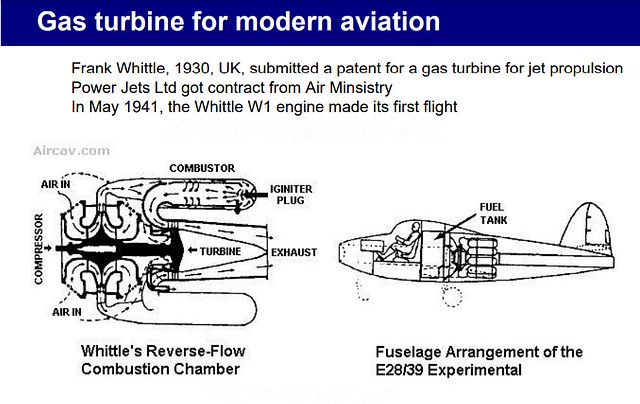
A highly recommended book on early jet engines btw is Hermione Giffard's Making Jet Engines in World War 2:
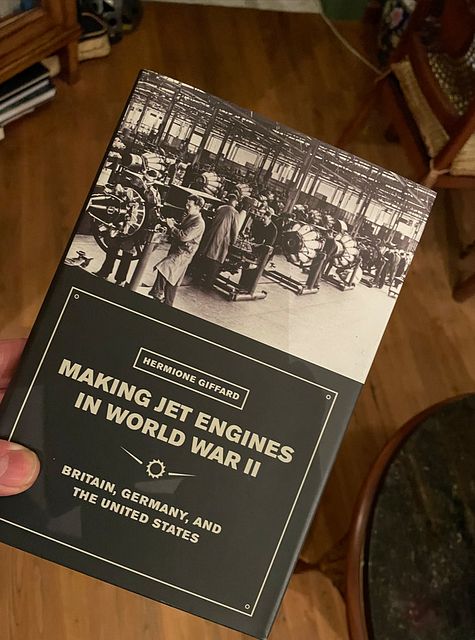
And therein it is detailed, amongst others, that subsequent designers right away dispensed with reverse flow combustion:
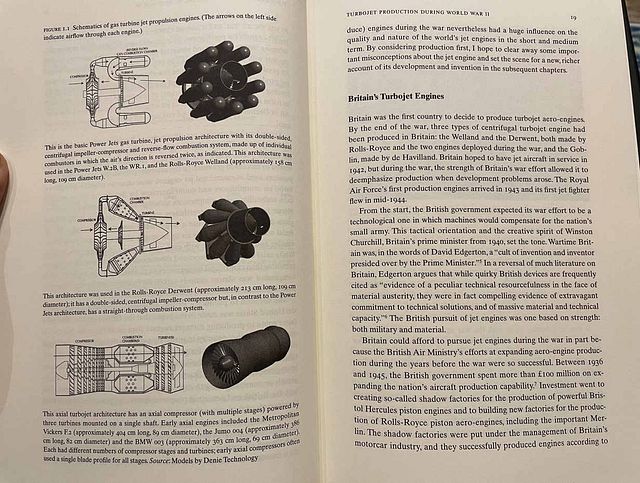
A very noteworthy desing was the Halford H1, designed by the legendary Frank Halford (father of the Napier Sabre), and which was a short while later renamed the de Havilland Goblin:
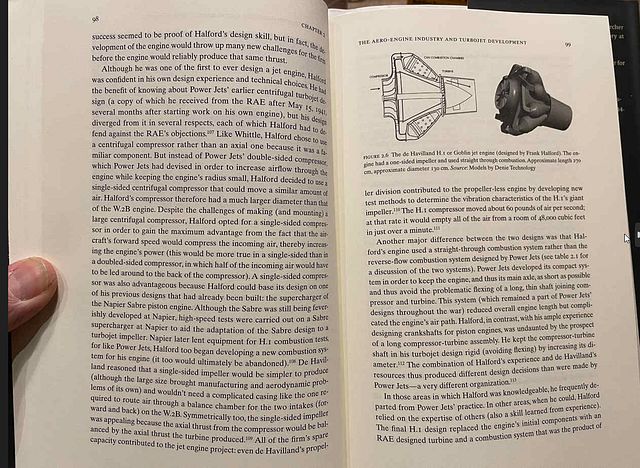
It was such a brilliant design from the start that, although it was conceived in 1941, its basic form remained unchanged until 1954, by which time it had evolved to the Mk. 35 export version. Pictured is the de Havilland Goblin II, which powered the de Havilland Vampire:
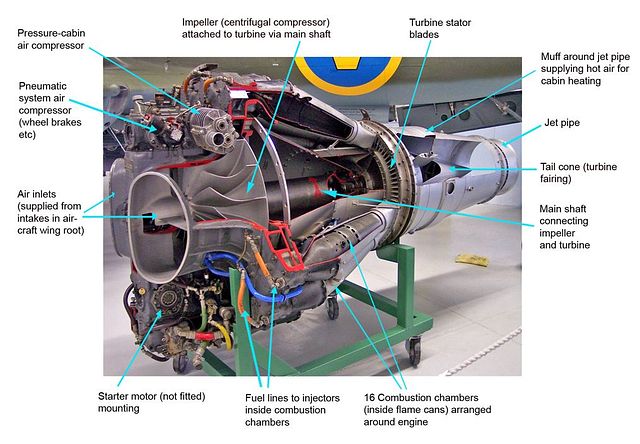
MFBB.
No comments:
Post a Comment